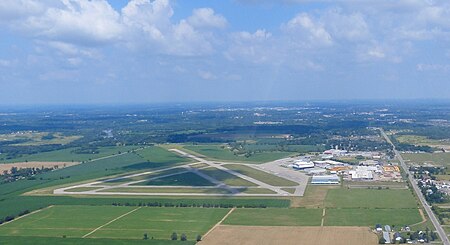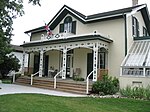Brantford Airport

Brantford Airport (ICAO: CYFD), also known as Brantford Municipal Airport, is a registered aerodrome located 4 nautical miles (7.4 km; 4.6 mi) west southwest of the City of Brantford, in the county of Brant, Ontario, Canada. There is a single fixed-base operator at the airport. The airport hosts a widely attended air show every year at the end of August, featuring the Royal Canadian Air Force aerobatic team the Snowbirds and airplanes from the Canadian Warplane Heritage Museum. The airport is home to many of the area's general aviation aircraft. Aviation spare parts retailer Aircraft Spruce established its sole Canadian location here in 2008, with expansion plans announced in 2013. The airport is often used for film shoots; scenes from Welcome to Mooseport, Where The Truth Lies and multiple Mayday episodes have been filmed there. Although the airport has never had scheduled air service, weekly charters fly students of the W. Ross Macdonald School home to Sudbury, Timmins, Trenton, Ottawa and Sault Ste. Marie. The airport is classified as an airport of entry by Nav Canada and is staffed by the Canada Border Services Agency (CBSA) on a call-out basis from the John C. Munro Hamilton International Airport. The CBSA officers at this airport currently can handle general aviation aircraft only, with no more than 15 passengers.
Excerpt from the Wikipedia article Brantford Airport (License: CC BY-SA 3.0, Authors, Images).Brantford Airport
Westview Avenue,
Geographical coordinates (GPS) Address Website External links Nearby Places Show on map
Geographical coordinates (GPS)
| Latitude | Longitude |
|---|---|
| N 43.1325 ° | E -80.341388888889 ° |
Address
Brantford Municipal Airport
Westview Avenue
N3T 0M5
Ontario, Canada
Open on Google Maps









